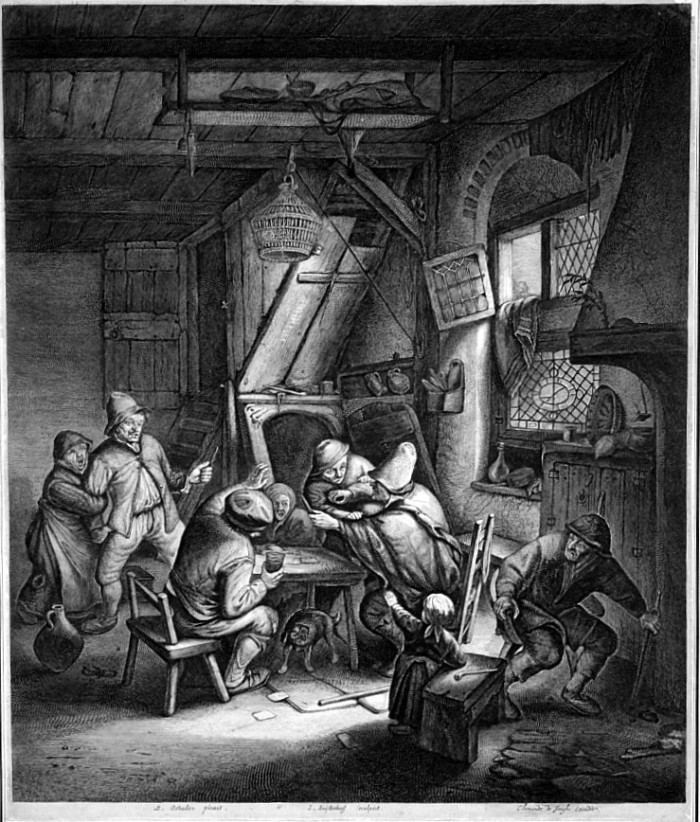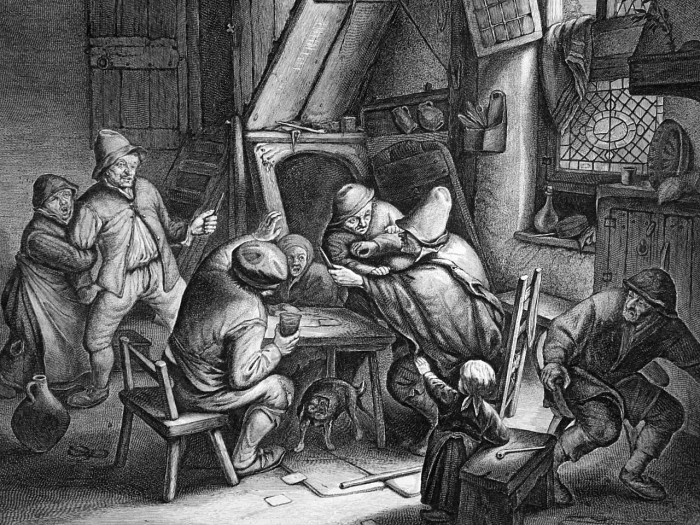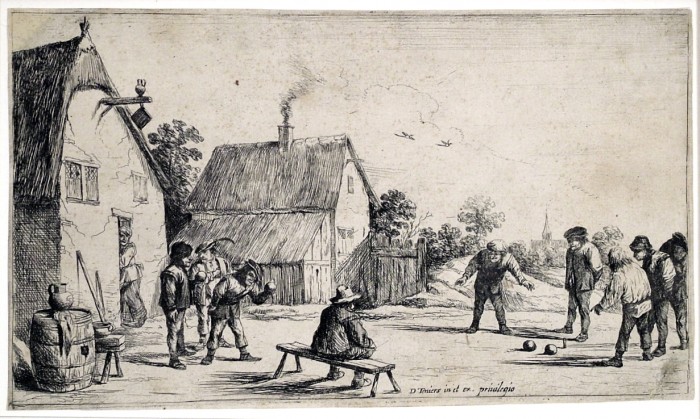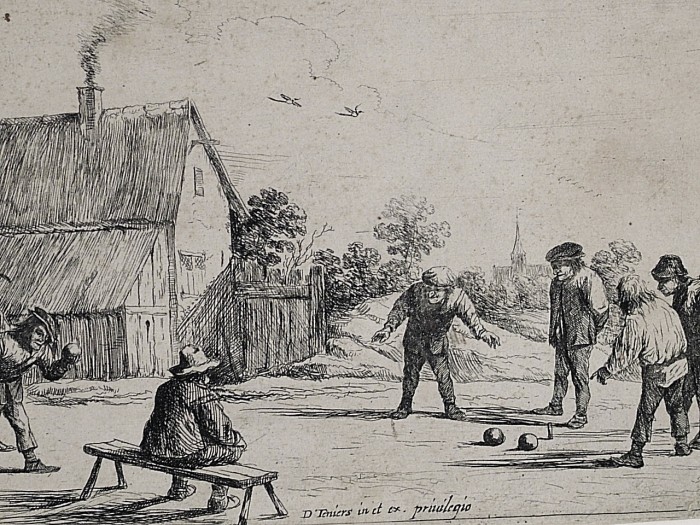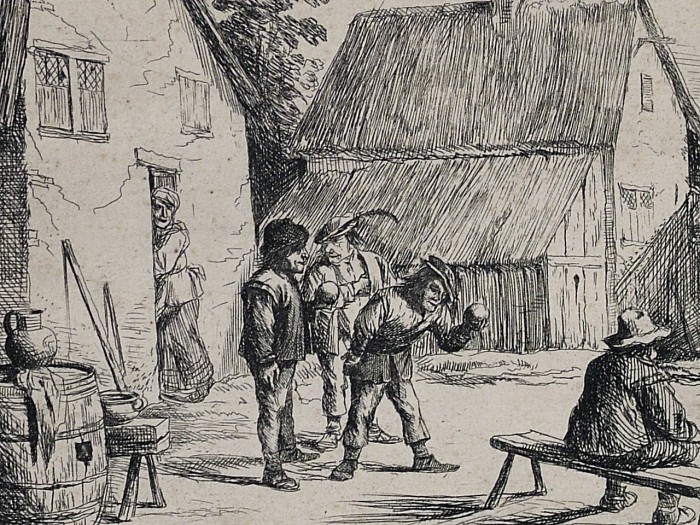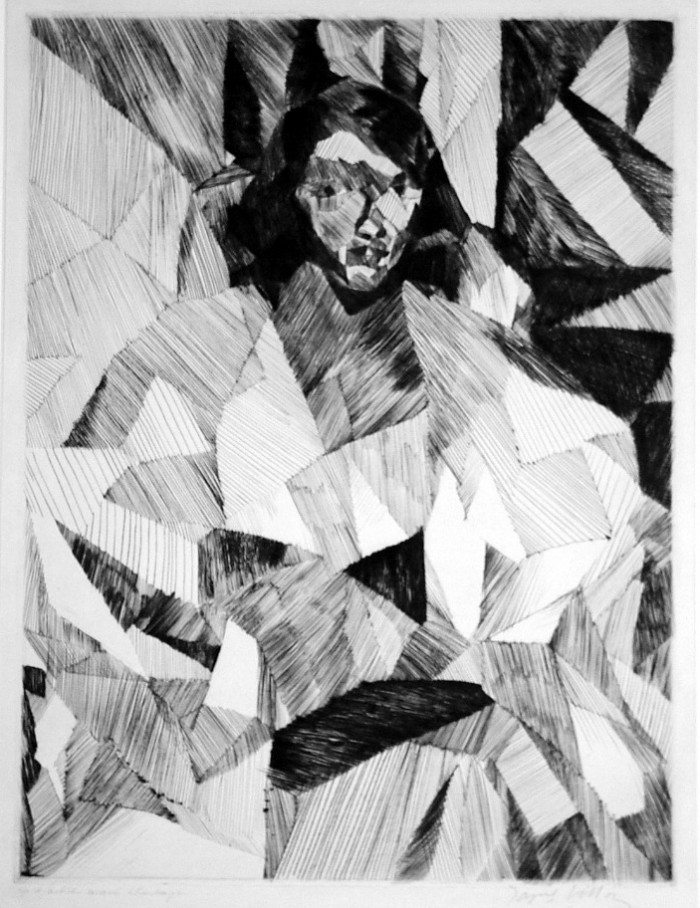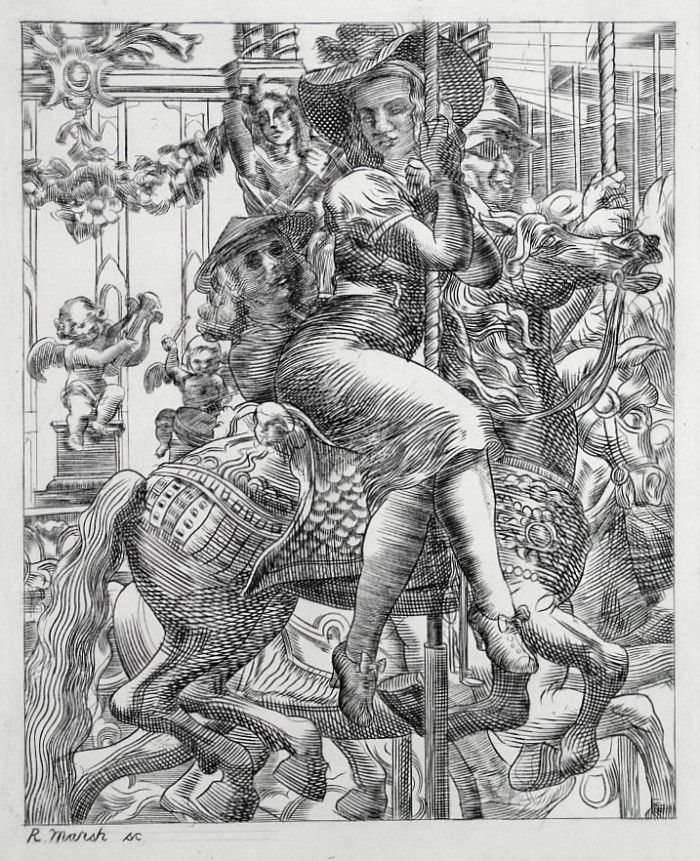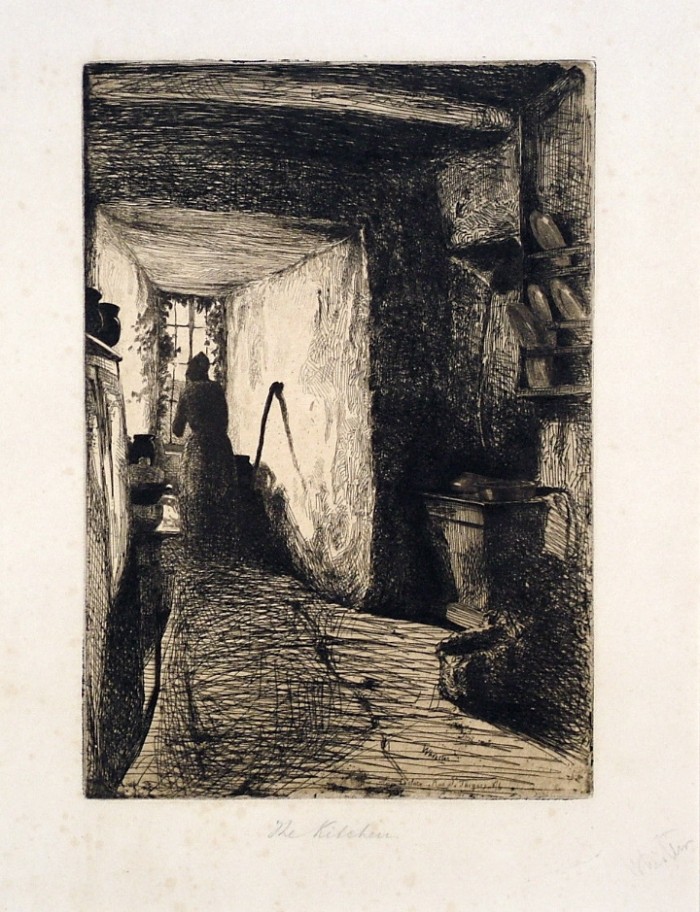
James Abbott McNeill Whistler (1834-1903), The Kitchen, etching, 1858, a proof from the Twelve Etchings, signed in pencil by the artist lower right. Reference: Kennedy 24, second state (of 3). Glasgow 16, second state (of 3). (Glasgow notes that since they have not located any impressions of Kennedy’s described, but not seen, first state, that state might not exist.) From a 1858 printing; there was a later edition of 50 impressions printed in a third state, signed with the butterfly (the pencil butterfly dates from 1879/81). Printed in dark brown ink, chine appliqué on wove. In generally good condition, with very wide margins, the matrix excellent; the backing sheet with some rubbing lower margin, faded foxing on backing sheet, folded along the far sides toward the edges, and with extensive annotation (see below). 9 x 6 1/4, the sheet 17 x 12 3/16 inches.
An extremely fine early impression, probably a proof before the early printings of the Twelve Etchings in 1858.
The following annotation is found on the sheet, lower margin: “This proof is pronounced by M. Thibaudeau to be ‘perhaps the finest that the plate has yielded.’ (Alphonse Wyatt Thibaudeau (1840-1892) was a well-known art critic and connoisseur and, late in his career, an art dealer; he was, with Messrs Dowdeswell, publisher of Whistler’s Second Venice Set in 1886.)
Other annotations:
Lower left: “W. 19.” (The Way catalogue number)
Lower center in ink: The number “15” inside a circle
Lower center: “1st etat” (which it may be, see note above)
Lower right: “62.00”
Lower center/right, above inscription: “167.”
Verso LL of the printed image written in pencil: “WHxr” (not located in Lugt, perhaps a dealer’s notation)
The wove backing sheet is larger than ordinarily found for the early, 1858, impressions of The Kitchen, but the dimensions do correspond to those of the impression at the Hunterian Art Gallery (Glasgow).
The Kitchen was drawn during Whistler’s etching tour of the Rhineland between 14 August and 7 October 1858.
It was published in Douze eaux-fortes d’après Nature (the ‘French Set’) in 1858, and by the Fine Art Society in 1885 in an edition of 50.
$13,500
